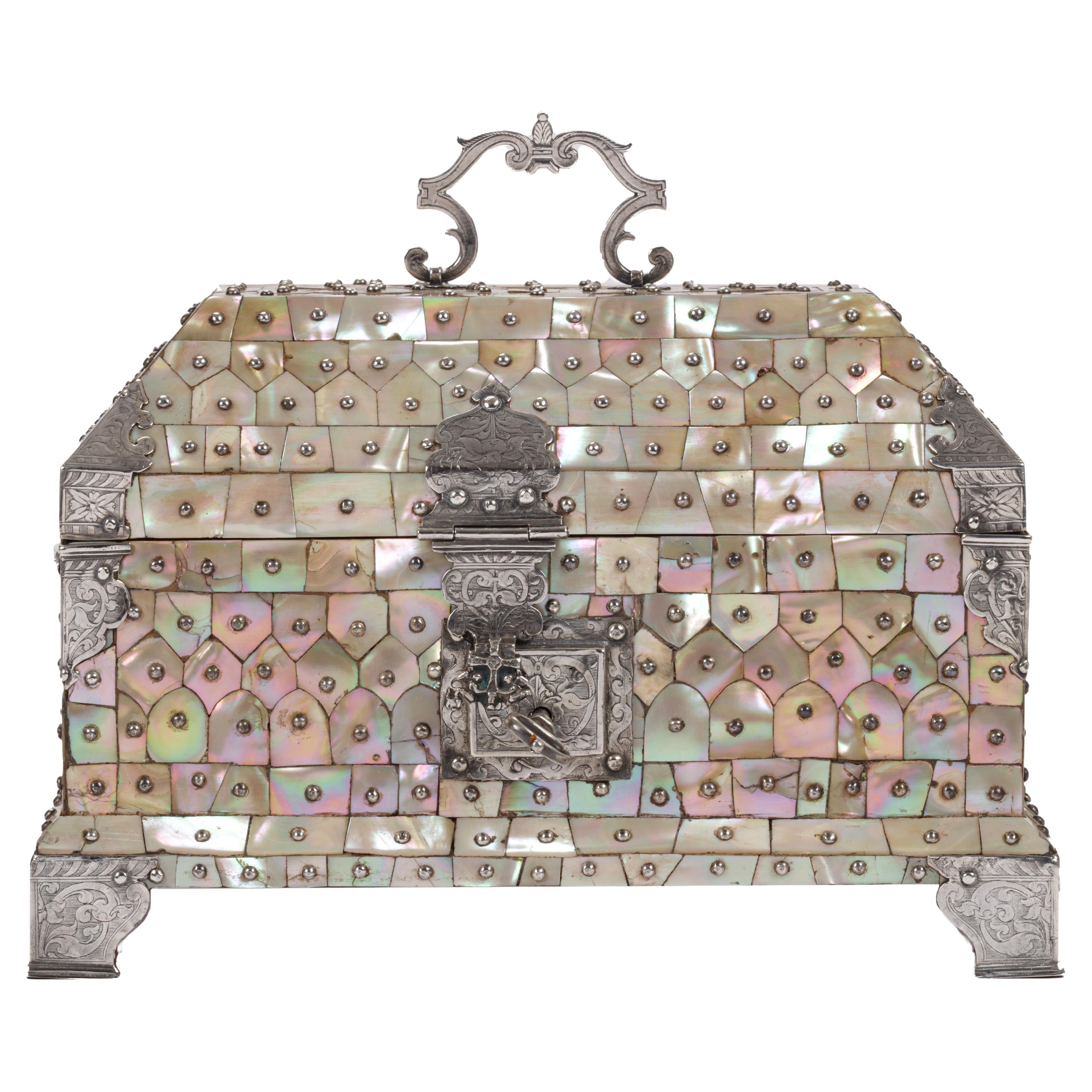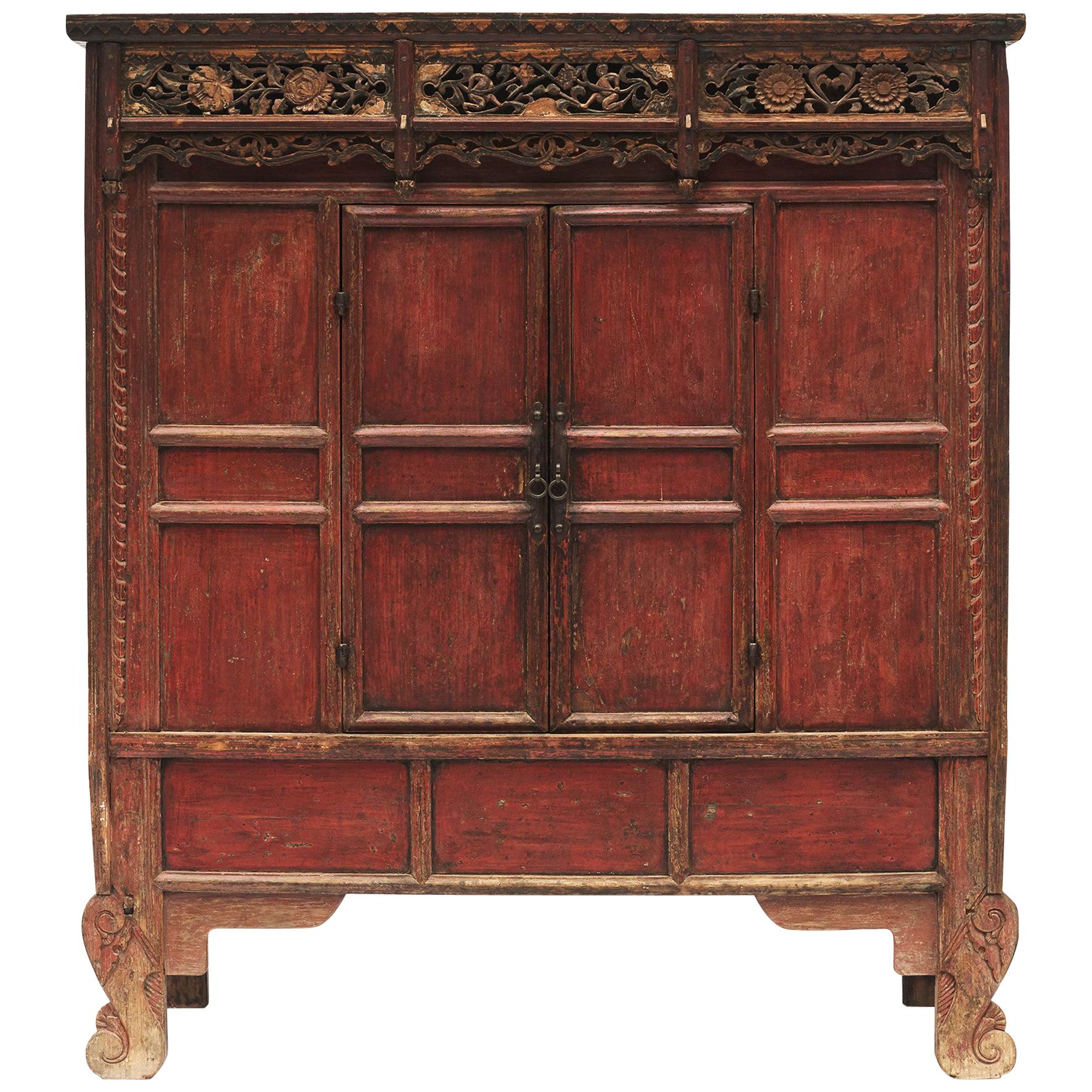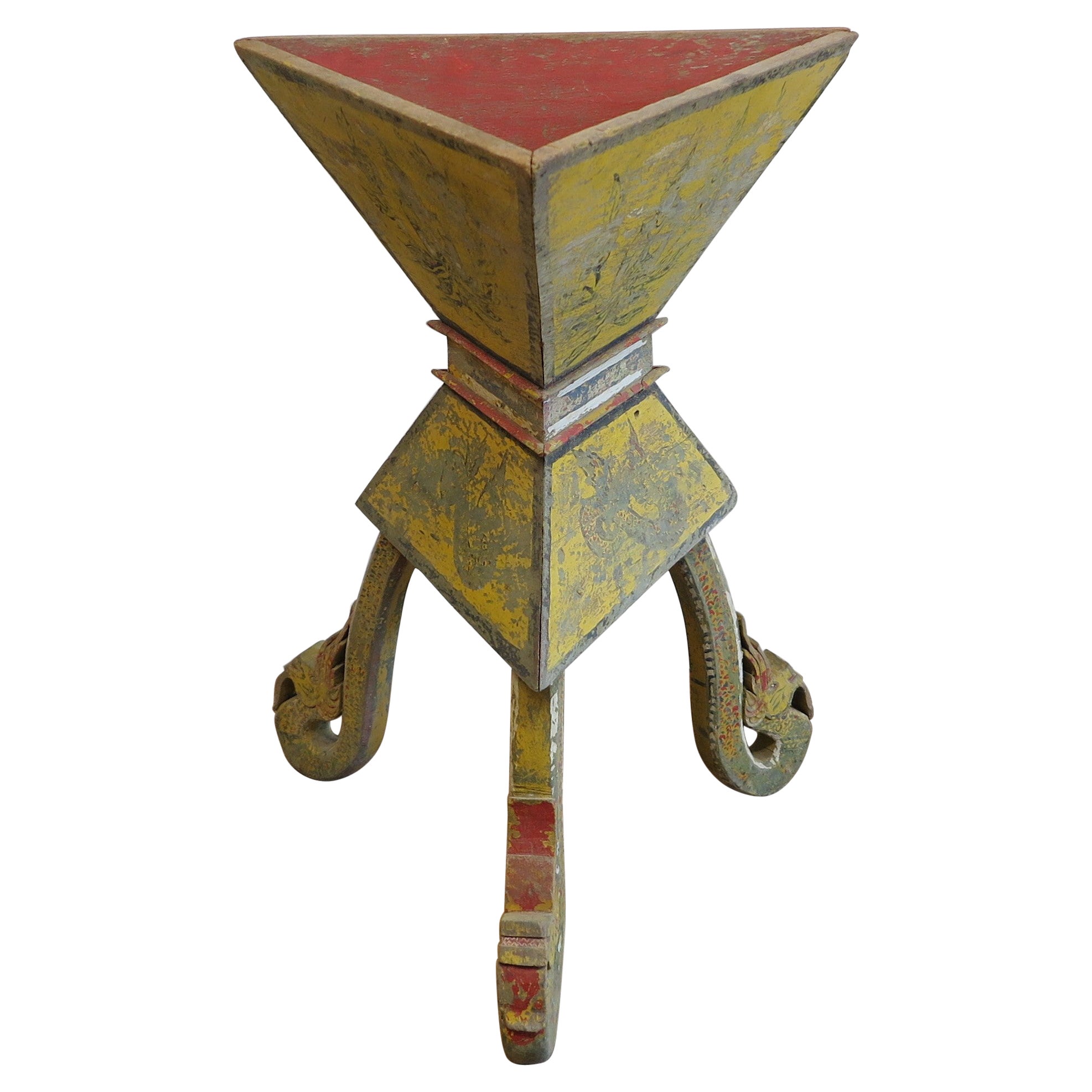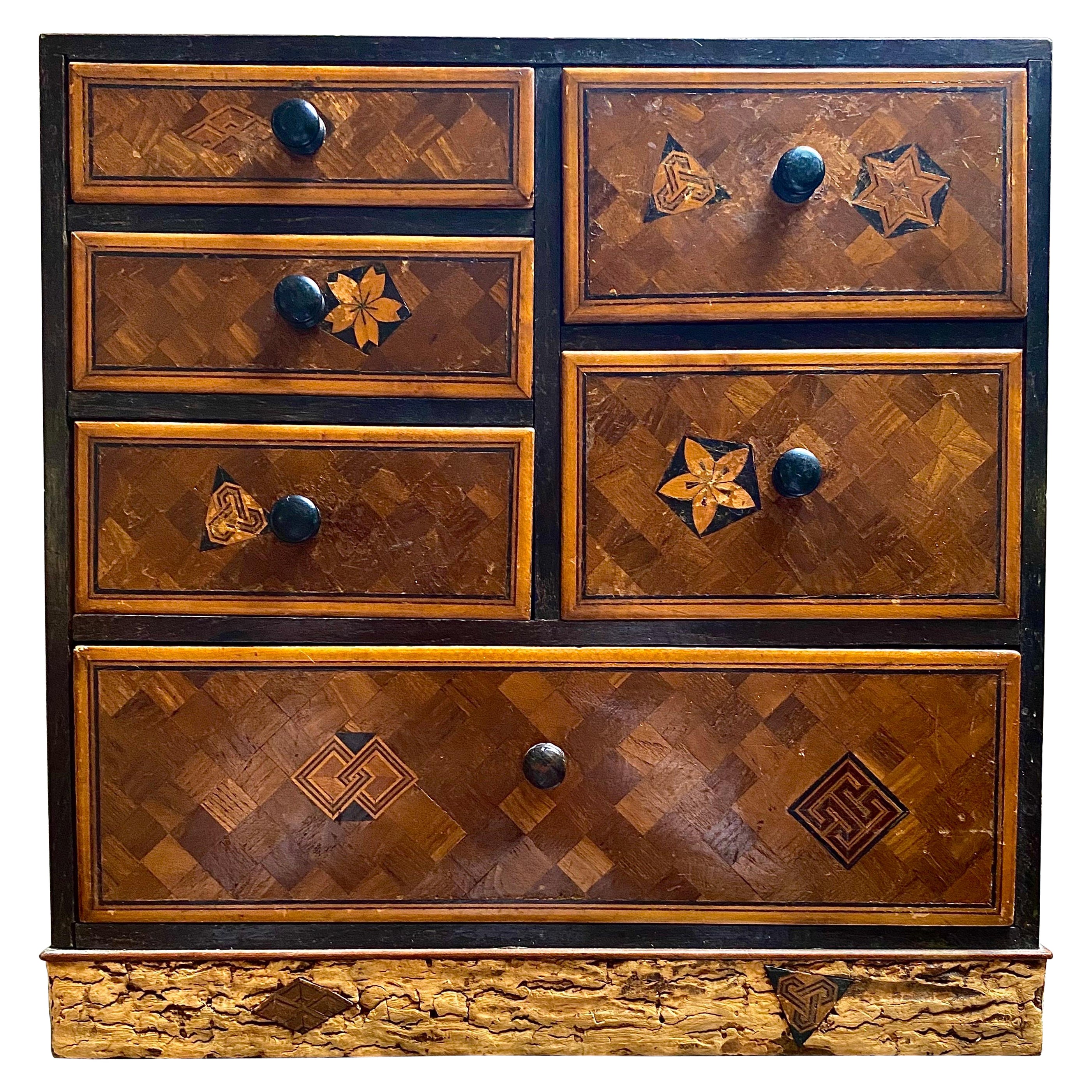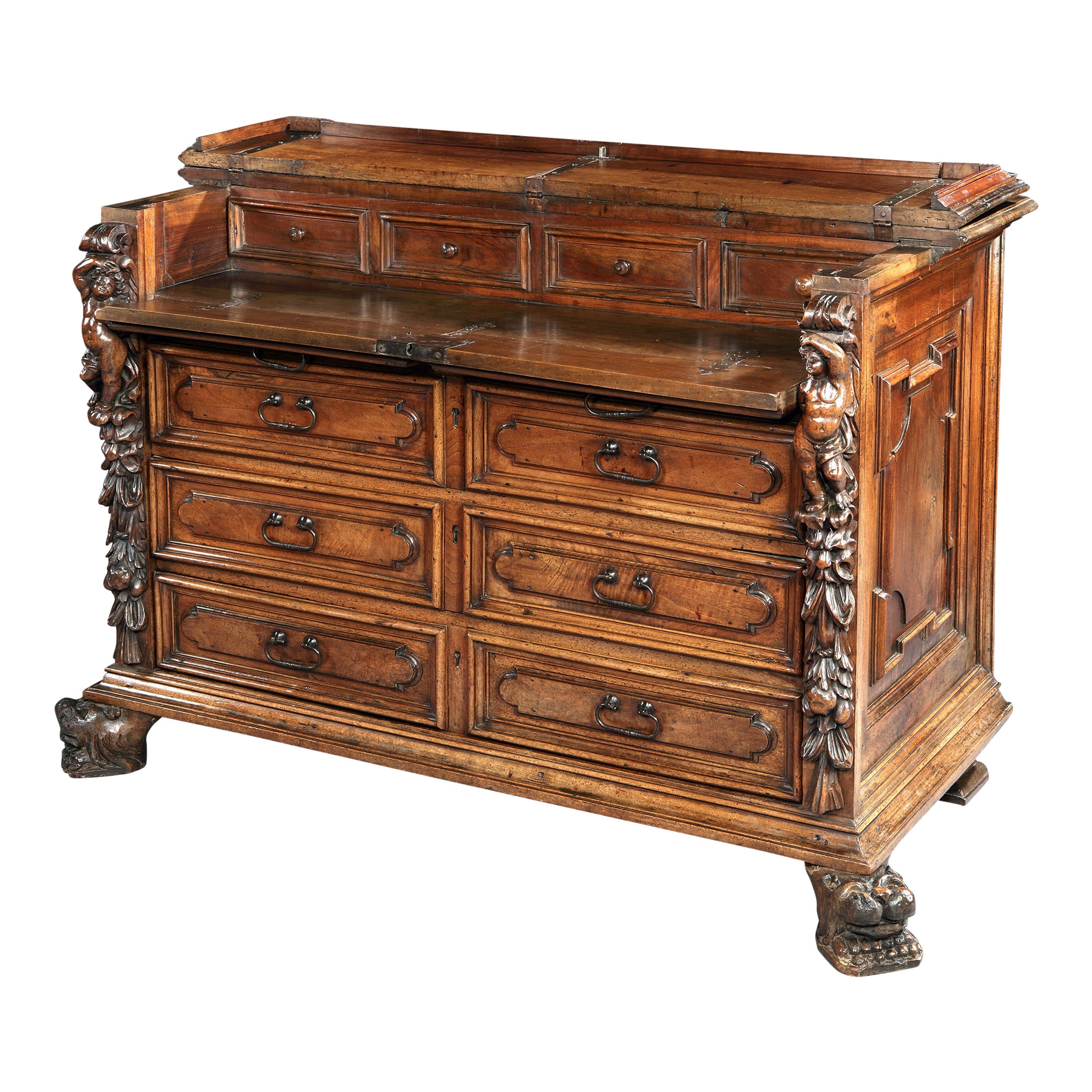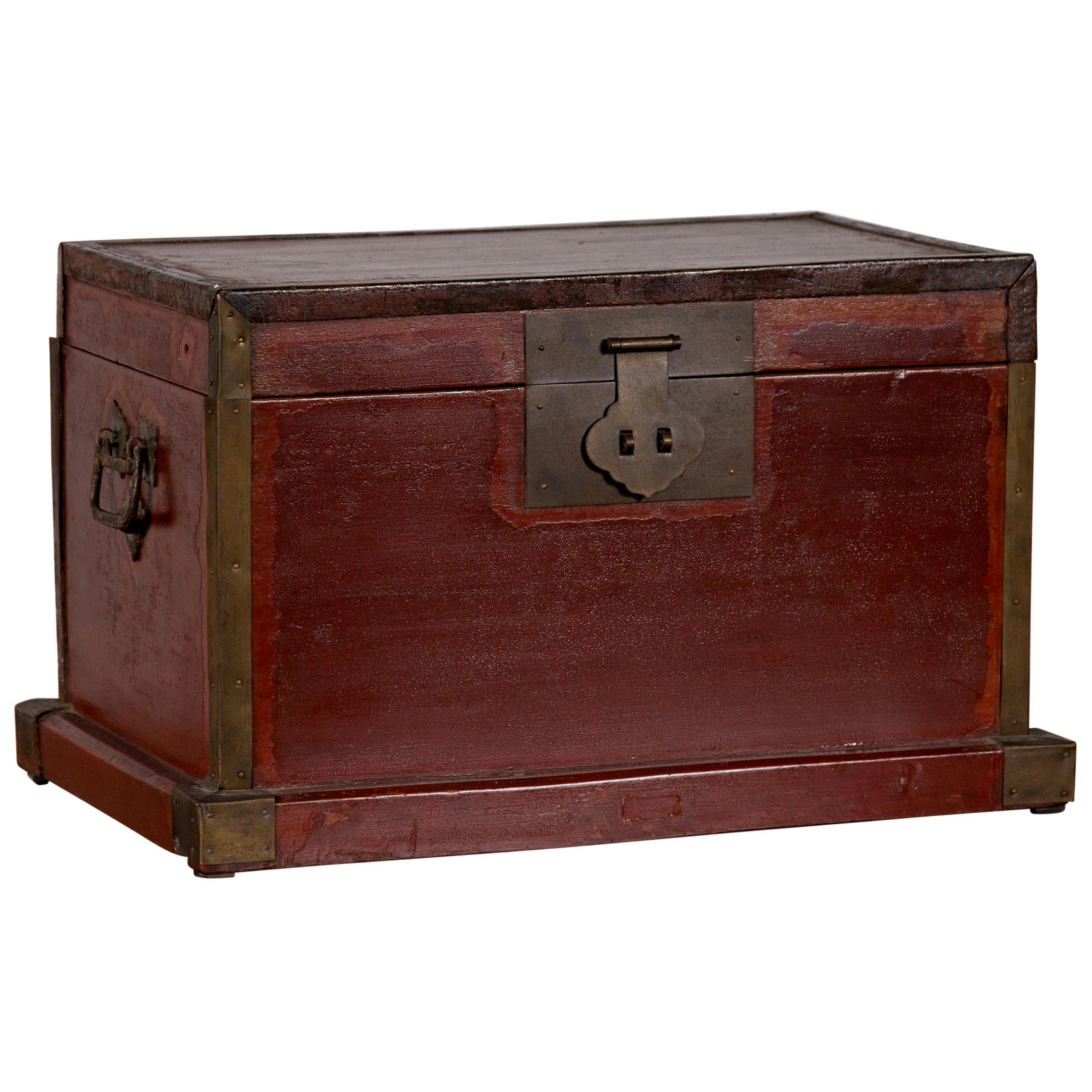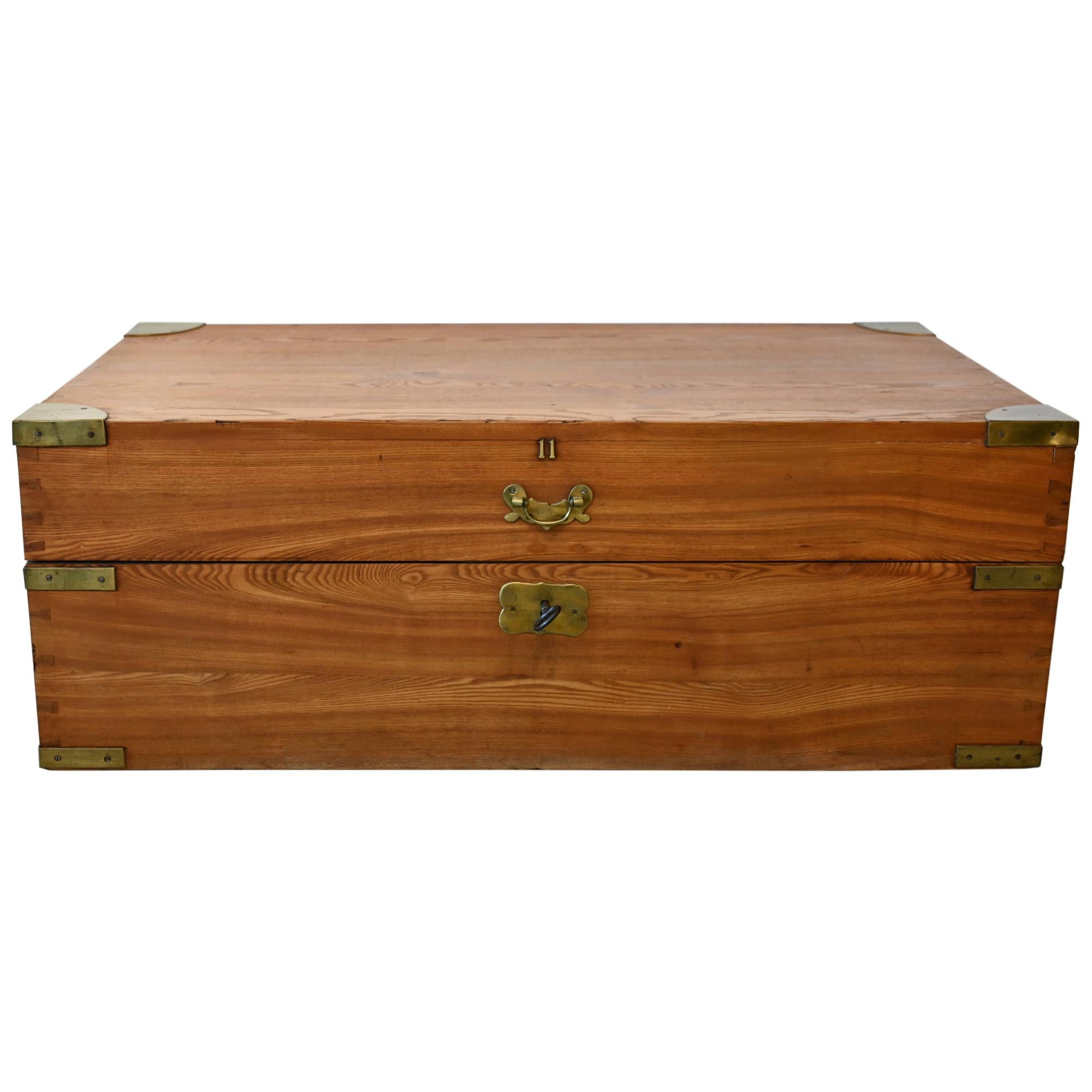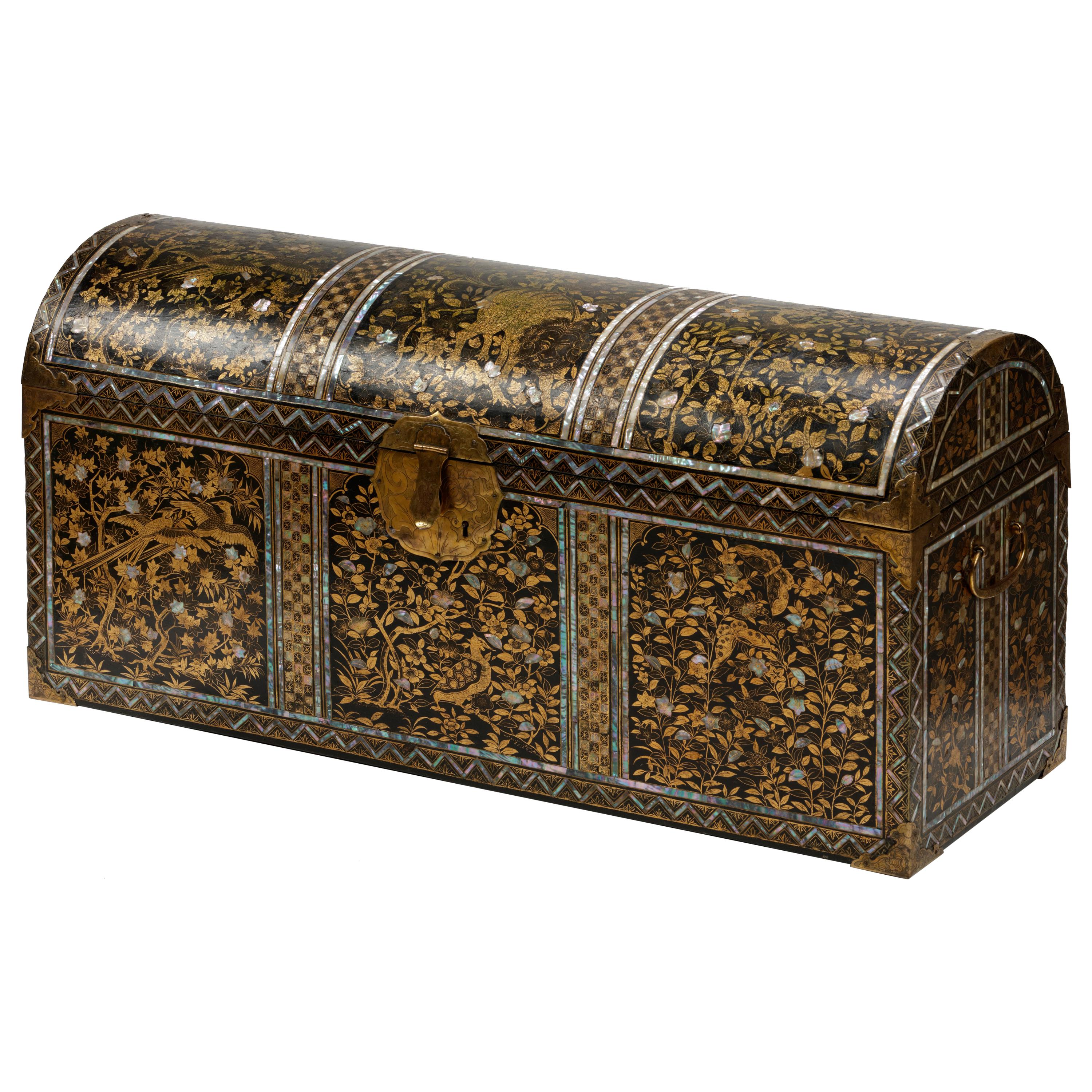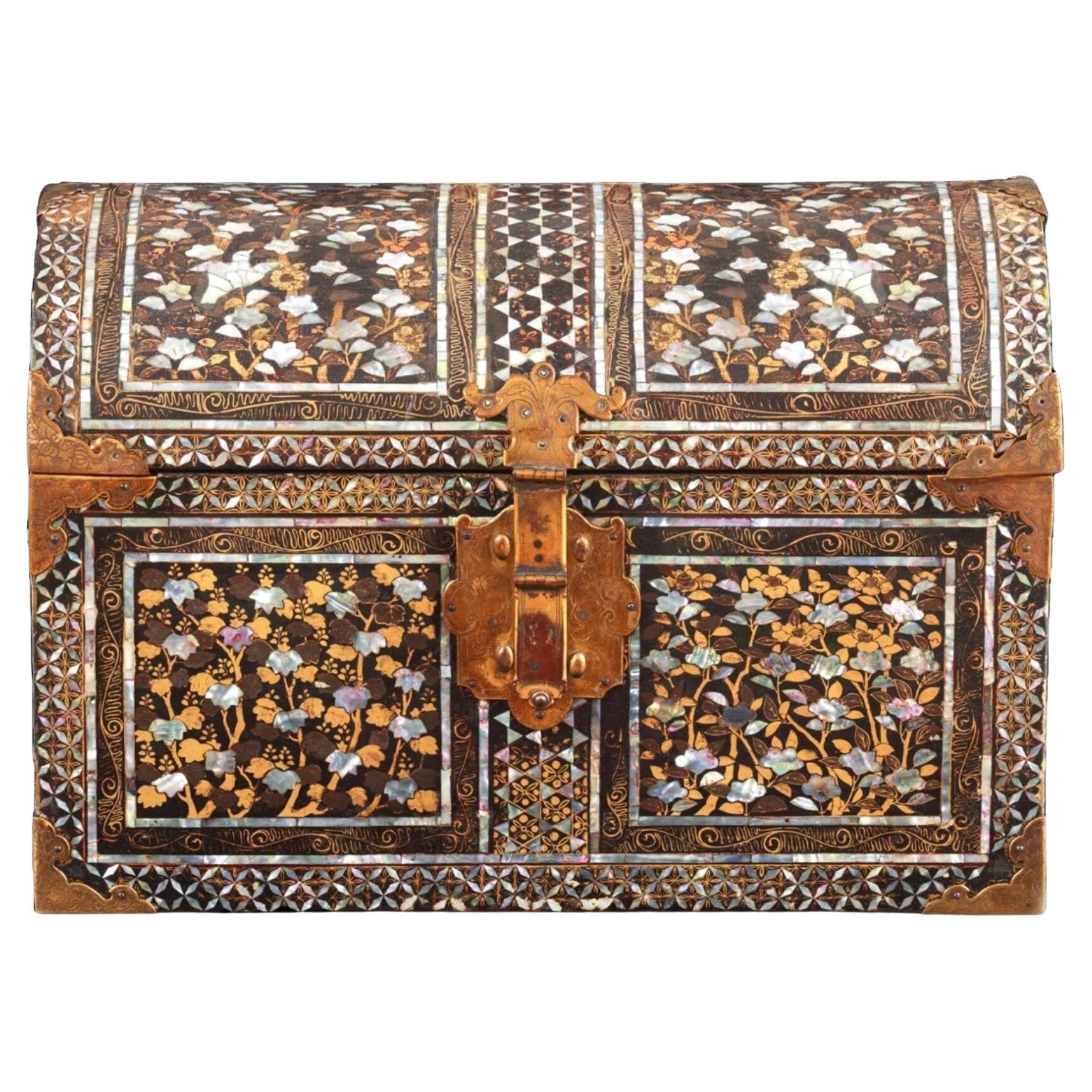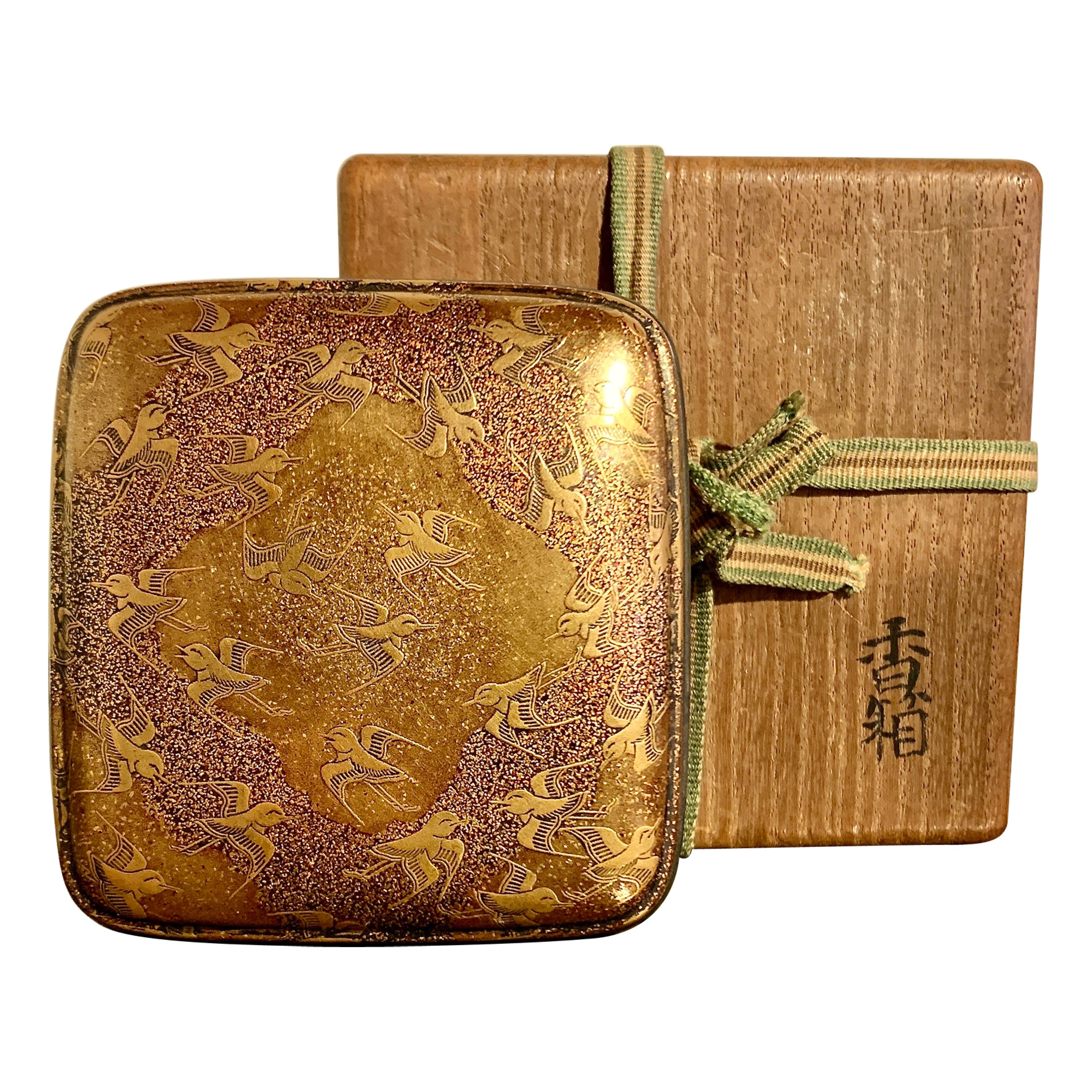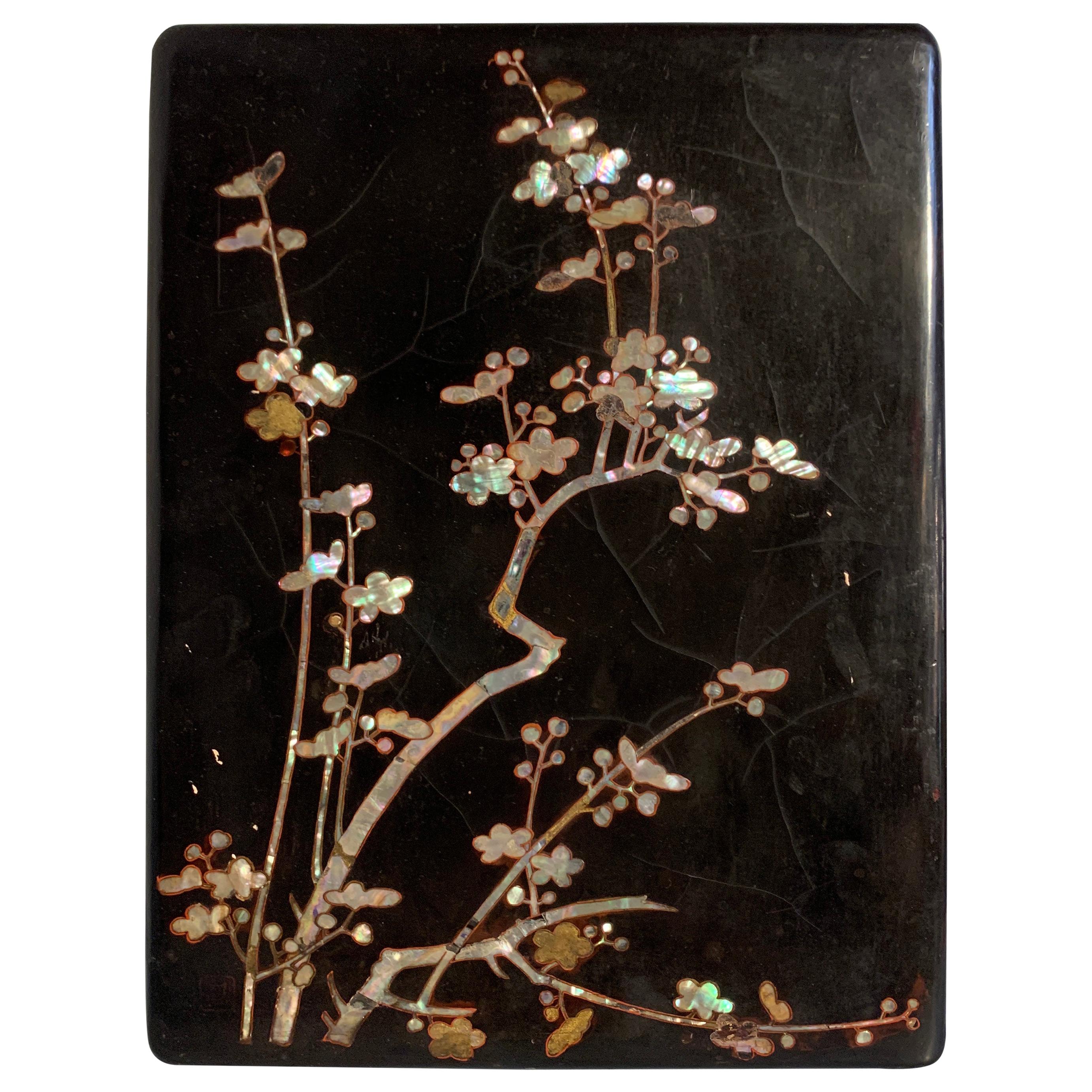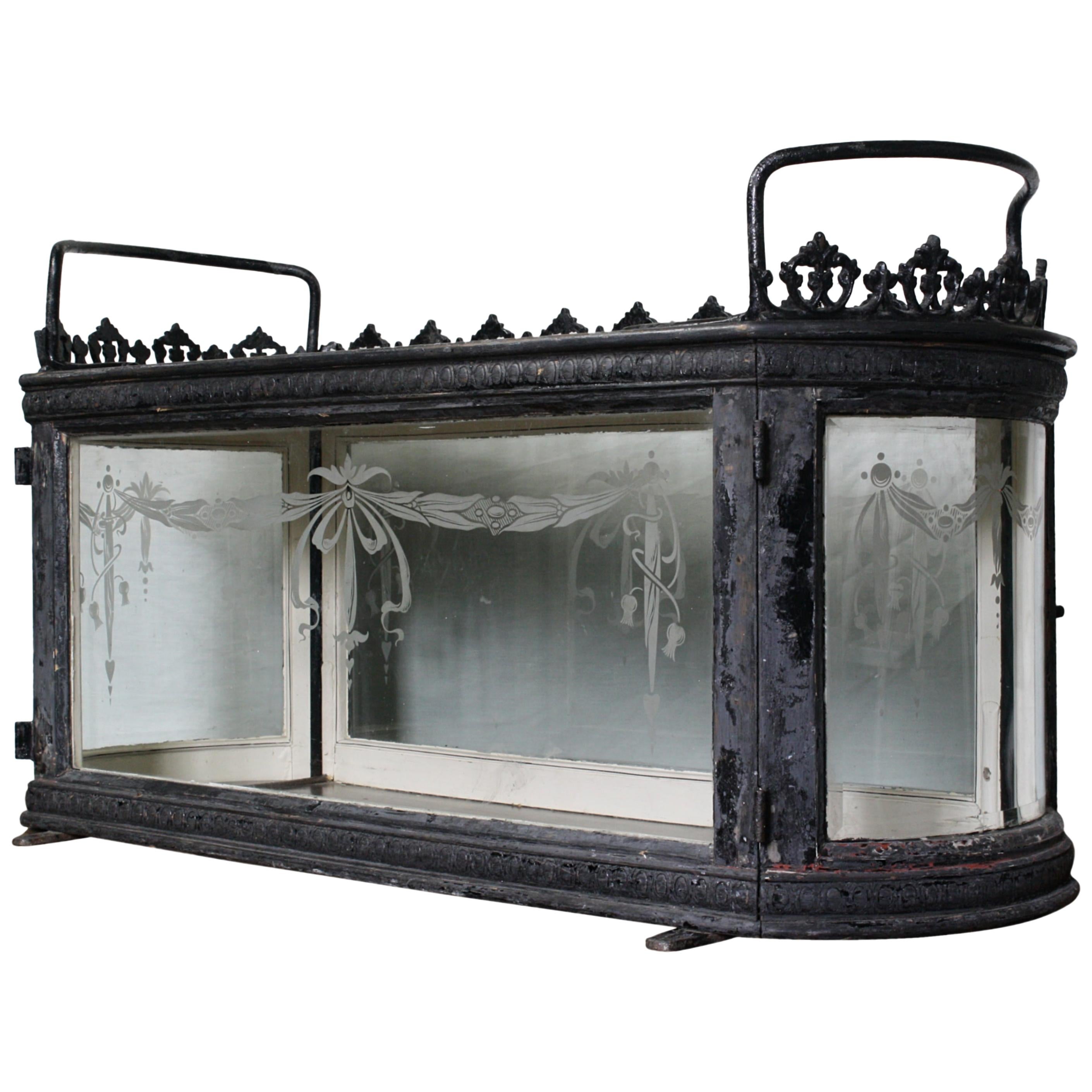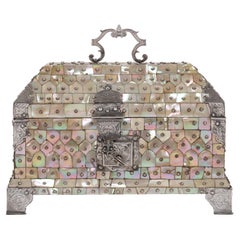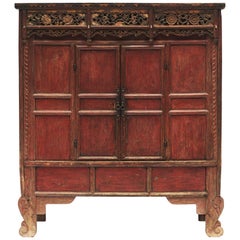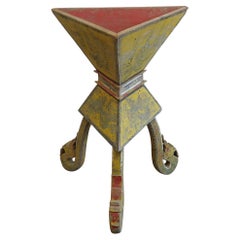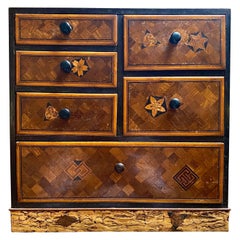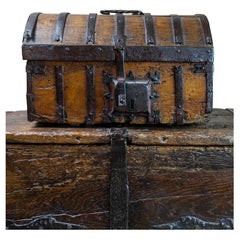
16th Century, Gothic Iron Bound Casket, French, Circa 1500-1540
View Similar Items
1 of 5
16th Century, Gothic Iron Bound Casket, French, Circa 1500-1540
$4,429.50List Price
About the Item
- Dimensions:Height: 10.63 in (27.01 cm)Width: 16.13 in (40.98 cm)Depth: 10.63 in (27.01 cm)
- Style:Gothic (Of the Period)
- Materials and Techniques:
- Place of Origin:
- Period:
- Date of Manufacture:1500
- Condition:Wear consistent with age and use.
- Seller Location:Leominster, GB
- Reference Number:1stDibs: LU7433231001242
Authenticity Guarantee
In the unlikely event there’s an issue with an item’s authenticity, contact us within 1 year for a full refund. DetailsMoney-Back Guarantee
If your item is not as described, is damaged in transit, or does not arrive, contact us within 7 days for a full refund. Details24-Hour Cancellation
You have a 24-hour grace period in which to reconsider your purchase, with no questions asked.Vetted Professional Sellers
Our world-class sellers must adhere to strict standards for service and quality, maintaining the integrity of our listings.Price-Match Guarantee
If you find that a seller listed the same item for a lower price elsewhere, we’ll match it.Trusted Global Delivery
Our best-in-class carrier network provides specialized shipping options worldwide, including custom delivery.You May Also Like
16th-Century Indo-Portuguese Colonial Mother-of-pearl Gujarat Casket
Located in Amsterdam, NL
An exceptional Indo-Portuguese colonial mother-of-pearl veneered casket with silver mounts
India, Gujarat, 2nd half of the 16th century, the silver mounts Goa or probably Lisbon
Measures: H. 16 x W. 24.6 x D. 16.1 cm
An exceptional Gujarati casket with a rectangular box and truncated pyramidal lid (with slopes on each side and a flat top) made from exotic wood, probably teak (Tectona grandis), covered with a mother-of-pearl mosaic. The tesserae, cut from the shell of the green turban sea snail (Turbo marmoratus, a marine gastropod) in the shape of fish scales, are pinned to the wooden structure with silver ball-headed nails. The casket is set on bracket feet on the corners. The masterfully engraved decoration of the silver mounts follows the most refined and erudite Mannerist repertoire of rinceaux and ferroneries dating from the mid-16th century. The high quality and refinement of the silver mounts and, likewise, the silver nails that replaced the original brass pins used to hold the mother-of-pearl tesserae in place indicate the work of a silversmith probably working in Lisbon in the second half of the 16th century.
The Indian origin of this production, namely from Cambay (Khambhat) and Surat in the present state of Gujarat in north India, is, as for the last three decades, consensual and fully demonstrated, not only by documentary and literary evidence - such as descriptions, travelogues and contemporary archival documentation - but also by the survival in situ of 16th-century wooden structures covered in mother-of-pearl tesserae. A fine example is a canopy decorating the tomb (dargah) of the Sufi saint, Sheik Salim Chisti (1478-1572) in Fatehpur Sikri in Agra district in the state of Uttar Pradesh, north India. This is an artistic production, geometric in character and Islamic in nature, where usually the mother-of-pearl tesserae form complex designs of fish scales or, similar to the dishes also made using the same technique, with the thin brass sheets and pins, stylized lotus flowers. The truncated pyramidal shape corresponds, like their contemporary tortoiseshell counterparts also made in Gujarat, to a piece of furniture used in the Indian subcontinent within the Islamic world prior to the arrival of the first Portuguese. This shape, in fact, is very old and peculiar to East-Asian caskets, chests or boxes used to contain and protect Buddhist texts, the sutras.
A similar chest is the famous and large reliquary chest from Lisbon cathedral that once contained the relics of the city's patron saint, Saint Vincent. Both match in shape, having the same kind of socle or pedestal and bracket feet, and in their engraved silver mountings, featuring the same type of refined, erudite decoration. Their differences lie in the silver borders that frame the entire length of the edges of the chest (both the box and the lid), pinned with silver nails, and on the lock plate, shaped like a coat of arms in the Lisbon example. Given the exceptional dimensions of the reliquary casket...
Category
Antique 16th Century Indian Jewelry Boxes
Materials
Silver
15th-16th Century Ming Dynasty Cabinet. Red Lacquer
Located in Kastrup, DK
Rare and well-preserved 16th century cupboard / cabinet.
Detailed carved top section depicting a floral leaf design and people in polychrome lacquer.
Front with red lacquer, pair of ...
Category
Antique 16th Century Chinese Ming Cabinets
Materials
Elm
19th Century Buddha Box Stand Table
Located in New York, NY
This stunning rustic Buddha box stand table is a late 19th century offering box. Significant Triangular shape box stand table set on legs carved as Naga's a...
Category
Antique 1890s Thai Rustic Decorative Boxes
Materials
Wood
Small Japanese Marquetry Cabinet Yosegi Zaiku 19th Century
Located in Beuzevillette, FR
Very beautiful Japanese jewelry cabinet in Yosegi-zaiku marquetry composed of six drawers. The whole is inlaid with geometrically shaped pieces of wood and decorated with motifs resembling kamon...
Category
Antique 19th Century Japanese Furniture
Materials
Wood
Cassettone or Bureau-Chest, Late 16th Century, Italian Renaissance, Walnut
Located in BUNGAY, SUFFOLK
Exceptional museum quality, Italian, renaissance walnut cassettone with fitted bureau in the upper part & exceptional Bambocci carving, Lombardy.
This magnificent cassettone exudes the character and quality of the finest, late-Renaissance furniture. Late 16th century, Northern Italian furniture often had the sides, legs or angles, 'a Bambocci', incorporating carved figures which were unique sculptures in their own right. The putti on this cassettone are beautifully carved and of sculptural quality. Each angel has one arm raised to heaven, a poignant touch. Showing customary signs of wear from time, the lion’s paw feet make a great statement. This cassettone was conceived to have visual impact through the quality of the carving, as well as being very practical with the writing compartment fitted in the top part. It has survived in very original condition with a few small repairs and losses, and the color and patina are warm and lustrous. This cassettone was illustrated in one of the seminal works on Lombardy furniture in the 1969 and has been in two renowned collections.
The hinged top in two sections faced with a solid moulded edge. The front part has a fall front and opens to reveal a writing compartment. The fall front retains its original lock and is concealed with a false drawer which is above three drawers. All with moulded panels, escutcheons and retaining the original iron handles. The front ends have exceptional, bambocci, carved putti raising their arms to heaven above trailing foliage. Standing on magnificent lion...
Category
Antique 16th Century Italian Baroque Furniture
Materials
Walnut
Qing Dynasty 19th Century Red Lacquered Treasure Chest Box with Brass Hardware
Located in Yonkers, NY
A Qing Dynasty period red lacquered treasure chest box from the 19th century, with brass hardware. Born during the 19th century, this exquisite Qing Dynasty red lacquered treasure ch...
Category
Antique 19th Century Chinese Qing Decorative Boxes
Materials
Brass
Recently Viewed
View AllMore Ways To Browse
Stag Horn Box
Tin Lunch Box Vintage
Wood Inlay Masonic
Alexander Lamont Limited
Boulle Box Glove
Civic Pewter
Crystal Glove Box
Curse Box
Fire Hose Reel
Fred Zimbalist Music Box
Oeuffice Ziggurat
Herend Potpourri
Limoges Cat Box
Antique Brass Slipper Box
Brass Trinket With Coral And Turquoise
Capo Esmaltes
Florentine Gilded Box
Huntley And Palmer Biscuit
